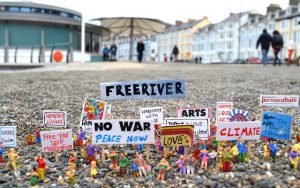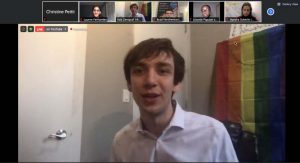New York Public Interest Research Group’s (NYPIRG) annual Student Empowerment Conference looked different this year as over 100 students logged into a Zoom meeting, rather than gathered in the halls of Purchase College. However, Hunter Student organizations are no stranger to adapting their approaches to civic engagement after going through two semesters of online schooling.
Student organizations, like NYPIRG and the CUNY University Student Senate (USSCUNY), attribute this time in quarantine for an uptick in student engagement and activism. For example, NYPIRG hosted a “Student Voter Helpline” that received over 100 calls, half of which came from CUNY students.

“Many students are fired up and mobilized,” said USSCUNY Chairwoman Juvanie Piquant during the first panel of the day, “What It Means To Be a Student Activist Now.” “They’ve been taking a more intentional approach in figuring out the issues and how we can educate ourselves.” Ensuring they keep up the momentum, organization leaders use technology and social media in a more articulate and streamlined manner to get important information into the hands of students.
The SUNY Student Assembly (SUNYSA) is trying to do just that with a new digital archive of resolutions and other documents that groups have produced over the years. “I think in this virtual circumstance and environment students will see this as a real resource,” said Brad Hershenson, SUNYSA president. “What we can do to learn from those areas and how we can apply that to today.”
Using the technology available to connect virtually, NYPIRG chair Rob Zentagraf, said video meetings allow students leaders and activists to build more communal power. Meetings that are now virtual have more of an appeal and reach for those who might not have been available for in-person meetings, like students who are parents or work full-time.
For student organizations, participation and shared knowledge is key and the virtual learning platform students are more engaged. Varied meeting times and creating a comfortable learning environment with video and microphone guidelines are the new norms for student groups.

With the opportunity to host virtual meetings with multiple schools and cities at once, NYPIRG can more efficiently collect data from ongoing projects from the entire state of New York. NYPIRG now hosts “issue workshops,” “where students from all across the state are meeting with project coordinators and leaders on stuff like public banking, our education campaign, our voting and democracy campaign to not only work with students on your campus or in the city but across the state to figure out what that work is doing,” said Zentagraf. Students are no longer confined to resources in their local chapter but chapters across states and have the option to choose the issues they want to focus their activism work on with more specific meetings.
Post-election and looking into the future, the three panelists advise that students have the greatest power when they are together. As non-partisan organizations, NYPIRG, SA and USS, encourage students to push their causes regardless of who is in charge. “It’s our job to bring the pressure, the change starts with us,” said Piquant. “There’s more power within the people, there’s more of us than them, and we just have to out-organize and strategize them so we can have victories.”









